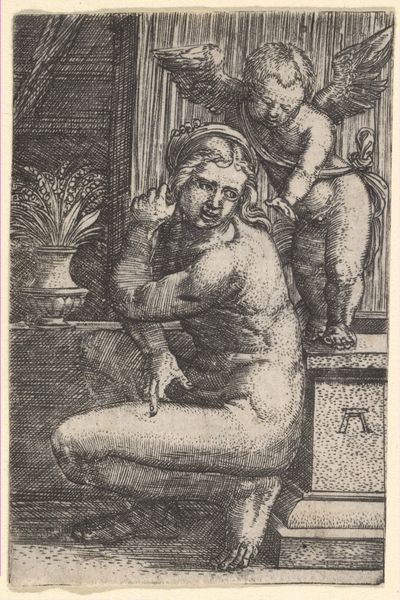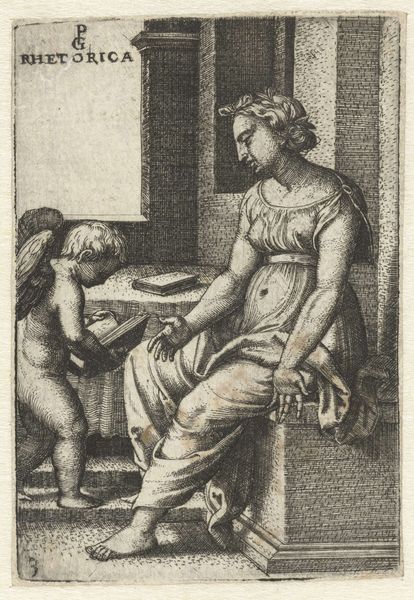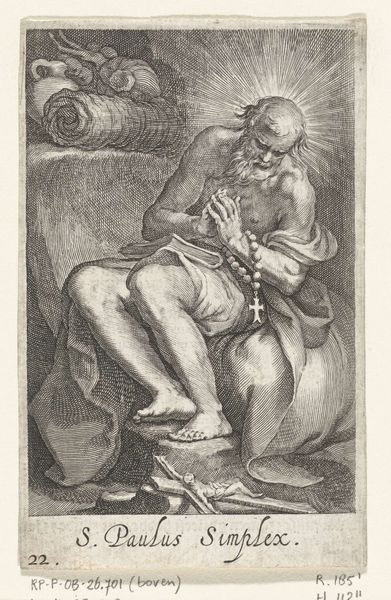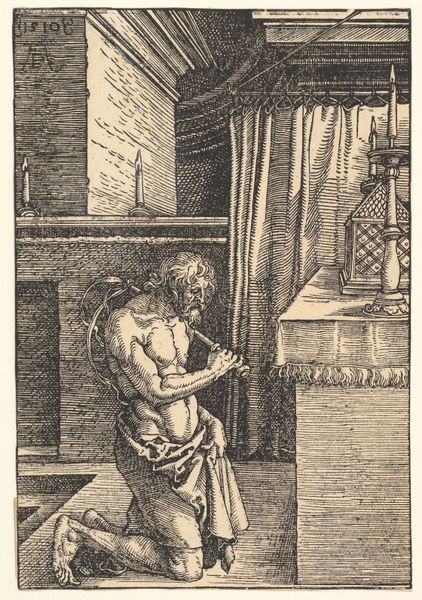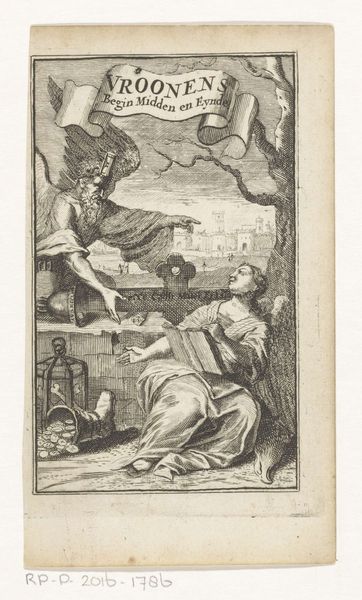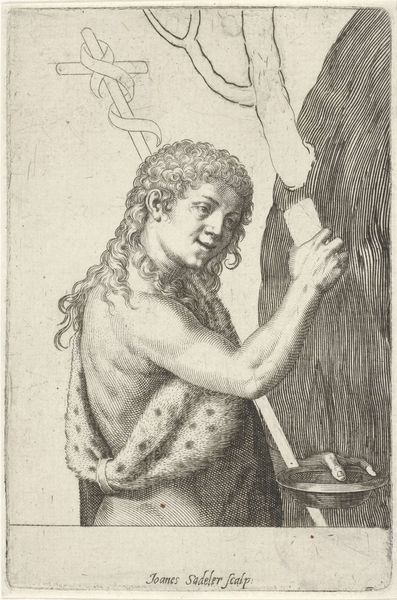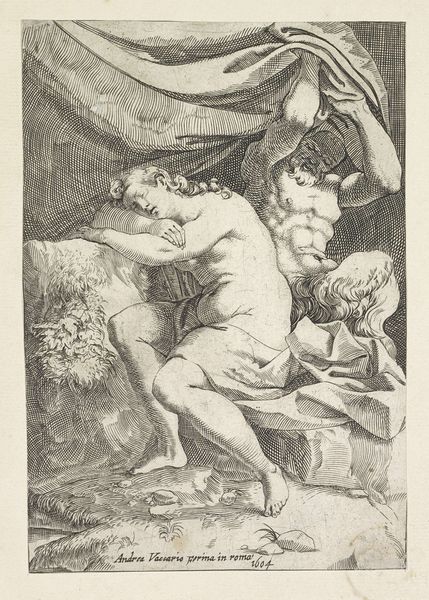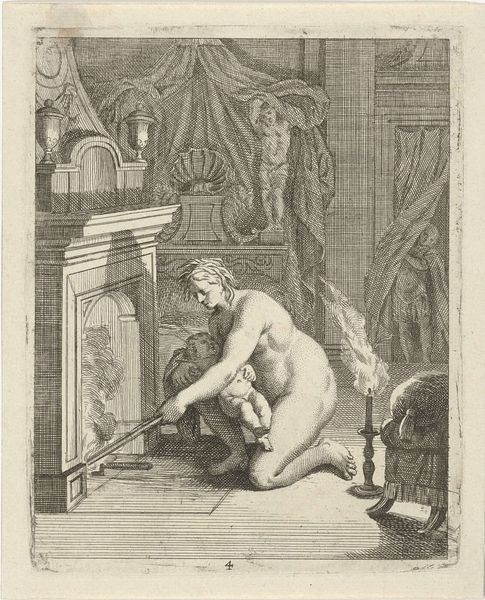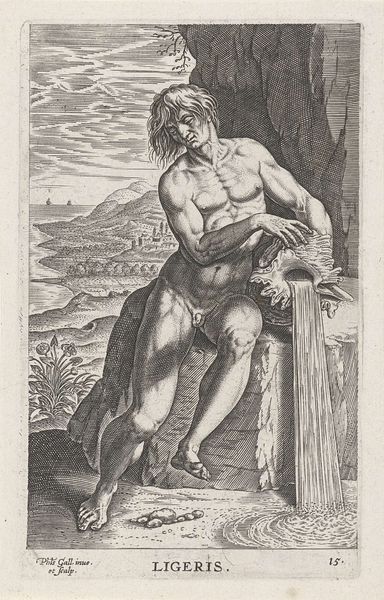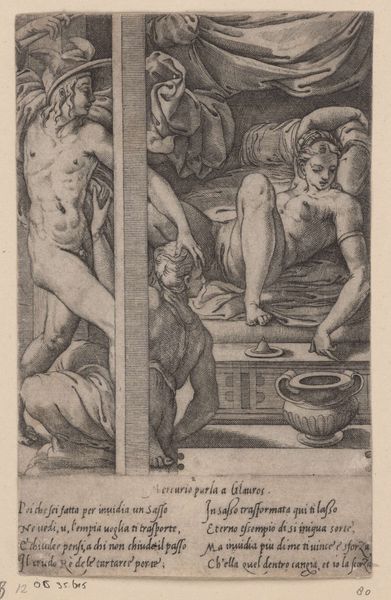
engraving
#
toned paper
#
old engraving style
#
figuration
#
history-painting
#
italian-renaissance
#
nude
#
engraving
Dimensions: height 56 mm, width 43 mm
Copyright: Rijks Museum: Open Domain
Sebald Beham etched this tiny, yet powerful, print of "The Death of Lucretia" in 1519. Here, we witness Lucretia at the moment of her suicide, an act of defiance against the dishonor she suffered. The most striking symbol here is the dagger, which becomes a poignant emblem of both her violation and her resolve. This act of plunging a blade into oneself is a recurring motif throughout history. We see echoes of it in ancient Roman tragedies, as well as Renaissance dramas. It has come to represent ultimate sacrifice and protest. Consider how this differs from other images of the same act: sometimes the blade is directed towards the viewer, other times it is pointed away. Yet, the emotional impact is the same: the viewer is confronted with the consequences of trauma. Lucretia's suicide becomes a powerful expression of her inner turmoil, engaging viewers on a deep, subconscious level. Thus, Lucretia’s dagger, like many symbols, follows a non-linear path, reappearing throughout art history, constantly reshaped by the fears and desires of each new era.
Comments
No comments
Be the first to comment and join the conversation on the ultimate creative platform.
